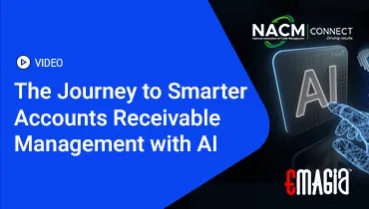Introduction
In the realm of business, maintaining a healthy cash flow is paramount. One crucial aspect of this is ensuring timely payments from clients or customers. When payments are delayed, businesses often resort to collection letters—a formal method of requesting payment while maintaining professionalism and compliance with legal standards. This guide delves deep into the nuances of collection letters, providing insights, examples, and best practices to help businesses navigate the debt collection process effectively.
Understanding Collection Letters
What is a Collection Letter?
A collection letter is a formal written communication sent by a creditor to a debtor, requesting the payment of an overdue invoice or debt. It serves as a reminder and a call to action, emphasizing the importance of settling the outstanding amount promptly.
Purpose and Importance
- Prompt Payment: Encourages timely settlement of dues.
- Documentation: Serves as a record of communication, which can be crucial if legal action becomes necessary.
- Professionalism: Maintains a formal and respectful tone, preserving business relationships.
Types of Collection Letters
Collection letters can be categorized based on the tone and urgency of the message:
1. Friendly Reminder Letter
- Timing: Sent shortly after the payment due date.
- Tone: Courteous and understanding.
- Content: Gently reminds the debtor of the overdue payment, assuming it was an oversight.
2. Past Due Notice
- Timing: Sent if payment hasn’t been received after the initial reminder.
- Tone: More assertive.
- Content: Highlights the overdue status and urges prompt payment to avoid further actions.
3. Final Demand Letter
- Timing: Sent after previous letters have been ignored.
- Tone: Firm and urgent.
- Content: Warns of potential legal actions if the debt remains unpaid.
4. Legal Notice Letter
- Timing: Last resort before initiating legal proceedings.
- Tone: Formal and serious.
- Content: Notifies the debtor of impending legal action if the debt isn’t settled by a specified date.
Key Components of an Effective Collection Letter
Crafting a compelling collection letter involves several essential elements:
1. Clear Identification
- Sender’s Information: Company name, address, and contact details.
- Recipient’s Information: Debtor’s name and address.
- Date: When the letter is written.
2. Reference Details
- Invoice Number: Specific invoice related to the debt.
- Amount Due: Exact amount owed.
- Due Date: Original payment due date.
3. Payment Instructions
- Methods: Accepted payment methods (e.g., bank transfer, online payment).
- Deadline: Specific date by which payment should be made.
4. Consequences of Non-Payment
- Late Fees: Potential additional charges.
- Legal Action: Possibility of legal proceedings.
- Credit Impact: Potential negative effect on credit scores.
5. Professional Tone
- Language: Polite yet firm.
- Empathy: Acknowledging potential financial difficulties.
Best Practices for Writing Collection Letters
To maximize the effectiveness of collection letters:
1. Maintain Professionalism
Always use respectful language, regardless of the situation. Avoid aggressive or threatening tones.
2. Be Clear and Concise
Ensure the message is straightforward, specifying the amount due and the consequences of non-payment.
3. Personalize the Letter
Address the debtor by name and reference specific details related to their account.
4. Offer Assistance
Provide options for payment plans or discuss potential solutions if the debtor is facing financial hardships.
5. Keep Records
Document all communications for future reference, especially if legal action becomes necessary.
Sample Collection Letter Examples
Friendly Reminder Letter
Subject: Gentle Reminder: Invoice #12345 Due
Dear [Debtor’s Name],
I hope this message finds you well. This is a friendly reminder that Invoice #12345, dated [Date], with an amount of [Amount], was due on [Due Date]. We understand that oversights happen and would appreciate it if you could process the payment at your earliest convenience.
If you’ve already made the payment, please disregard this notice.
Thank you for your attention to this matter.
Sincerely,
[Your Name]
[Your Company]
Final Demand Letter
Subject: Final Notice: Immediate Payment Required for Invoice #12345
Dear [Debtor’s Name],
Despite our previous communications regarding Invoice #12345, dated [Date], with an outstanding amount of [Amount], we have yet to receive payment.
Please be advised that if the full payment is not received by [Final Due Date], we will have no choice but to initiate legal proceedings to recover the debt.
We urge you to treat this matter with urgency.
Sincerely,
[Your Name]
[Your Company]
How Emagia Enhances Debt Collection Processes
Streamlining Collections with Emagia’s AI-Powered Solutions
Emagia offers advanced digital solutions that revolutionize the debt collection process:
- Automated Workflows: Streamlines the sending of collection letters based on predefined schedules and debtor responses.
- AI-Driven Insights: Analyzes debtor behavior to optimize communication strategies.
- Integrated Payment Platforms: Facilitates easy payment options directly from the collection letter.
- Compliance Management: Ensures all communications adhere to legal standards and best practices.
By leveraging Emagia’s technology, businesses can enhance their collection efficiency, reduce outstanding debts, and maintain positive customer relationships.
Frequently Asked Questions
What should I do if a debtor does not respond to my initial collection letter?
If there’s no response, follow up with subsequent letters, each escalating in tone. If all attempts fail, consider involving a collection agency or pursuing legal action.
How many collection letters should I send before taking legal action?
Typically, businesses send three to four letters: a friendly reminder, a past due notice, a final demand, and a legal notice. If there’s still no response, legal proceedings may be necessary.
Is it legal to charge late fees in collection letters?
Yes, but only if the original agreement or contract specifies the possibility of late fees. Always ensure compliance with local laws and regulations.
Can I send collection letters via email?
Yes, electronic communication is acceptable. However, ensure that the method complies with legal standards and that you have proof of delivery.
How can I ensure my collection letters comply with legal standards?
Familiarize yourself with local and national debt collection laws, such as the Fair Debt Collection Practices Act (FDCPA) in the U.S., and consult with legal professionals when necessary.
Popular Blogs
- What is Cash Application Process? Steps, Objectives, Complex, and Benefit
- What is Order to Cash process, why is it hard, how to improve it?
- The Ultimate Guide to Credit Application Checklist Spreadsheet Template: Streamline Your Credit Approval Process
- Pay to the Order of: A Comprehensive Guide to Understanding and Using Checks
- Automate Invoice Capture: Revolutionizing the Way Businesses Handle Invoices
- Financial Statement Data Extraction: A Complete Guide
- Streamlining Financial Systems: Automating AR, AP, and Treasury Entries
- Best Accounts Receivable Management Software
- What is the Best Accounts Receivable Management Software?
- What is Order-to-Cash Automation? Comprehensive Guide to Streamlining Your Business Processes
- Invoice Data Extraction: Revolutionizing the Way Businesses Handle Billing Information
- What is Intelligent Document Processing (IDP)? A Comprehensive Guide
- What is Cash Flow Forecasting Software? A Complete Guide
- What is AI-powered Collection Management Software: A Comprehensive Guide
- What is Credit Management Software?
- What is Electronic Invoice Presentment and Payment (EIPP)?
- Invoice Automation Systems: Revolutionizing Accounts Payable for Modern Businesses
- Purchase Order Extraction: A Comprehensive Guide to Streamlining Procurement Processes
- Bank Statement Extraction: Optimizing Financial Data Management
- What is AR Automation: Revolutionizing Accounts Receivable Management
- Invoice Automation Software: Revolutionizing Business Efficiency
- AI Invoice Processing: Revolutionizing Accounts Payable with Artificial Intelligence
- Bank Statement Processing: A Comprehensive Guide



